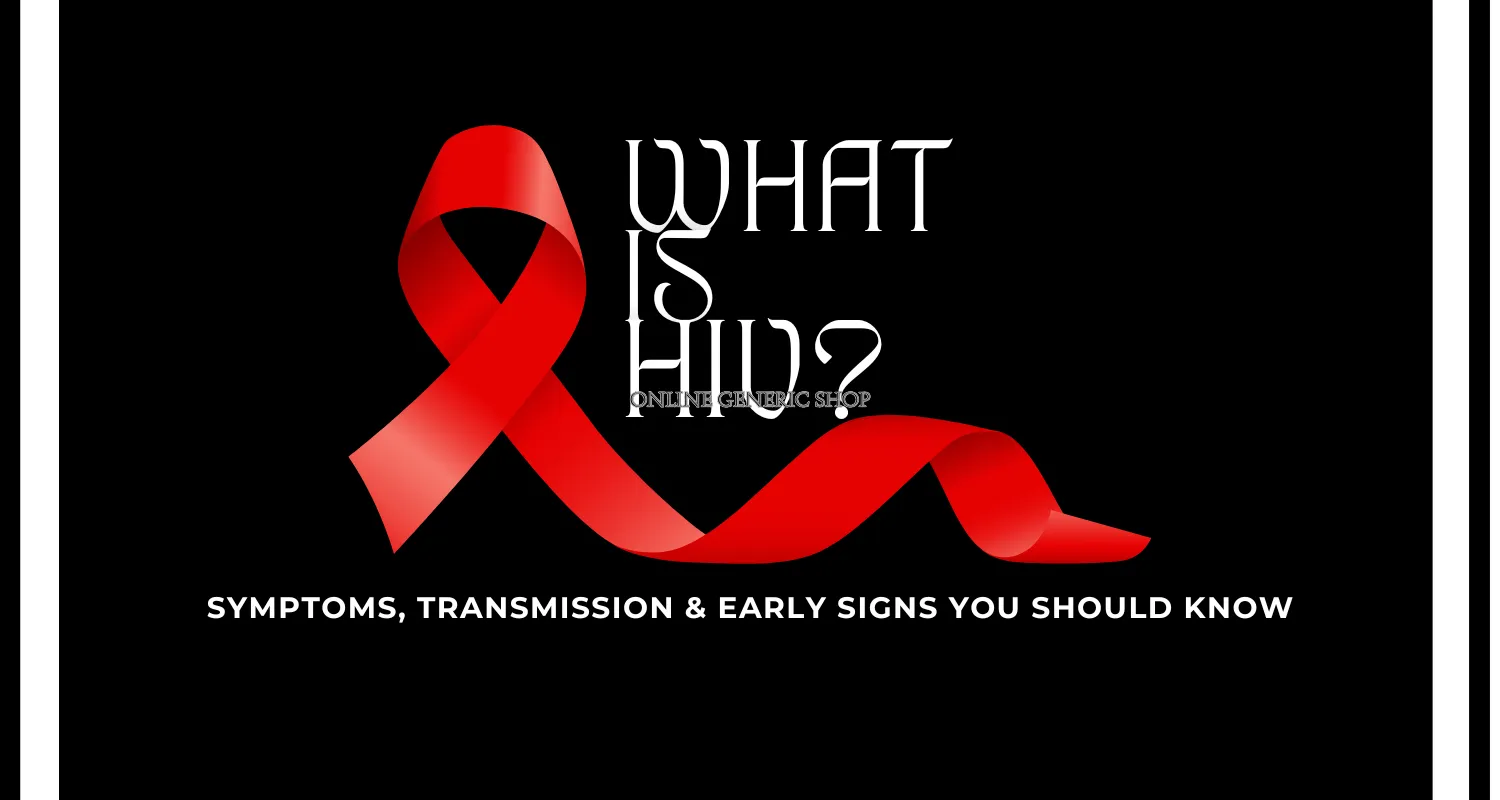What Is HIV? Symptoms, Transmission & Early Signs You Should Know

What Is HIV? Symptoms, Transmission & Early Signs You Should Know
HIV, or Human Immunodeficiency Virus, is a global health concern that affects millions of people. While advancements in treatment have transformed HIV into a manageable condition, understanding the virus, its symptoms, transmission methods, and early signs remains critical for prevention and timely intervention. In this blog, we’ll break down the essentials of HIV to empower you with knowledge and awareness.
What Is HIV?
HIV is a virus that attacks the body’s immune system, specifically targeting CD4 cells (also called T-cells), which help fight infections. Over time, if untreated, HIV can weaken the immune system, making the body vulnerable to opportunistic infections and certain cancers. When HIV progresses to its most advanced stage, it is classified as AIDS (Acquired Immunodeficiency Syndrome). However, with modern treatments, most people with HIV never develop AIDS and can live long, healthy lives.
HIV is a chronic condition, but early diagnosis and antiretroviral therapy (ART) can effectively manage the virus, allowing individuals to maintain a strong immune system and prevent transmission to others.
How Is HIV Transmitted?
HIV spreads through specific bodily fluids, including blood, semen, vaginal fluids, anal fluids, and breast milk. The most common ways HIV is transmitted include:
- Unprotected Sexual Contact: Having vaginal, anal, or oral sex without a condom with someone who has HIV, especially if they are not on effective treatment, carries a risk of transmission. Anal sex is the highest-risk sexual activity.
- Sharing Needles or Syringes: Using contaminated needles or drug equipment can transmit HIV.
- From Mother to Child: HIV can be passed during pregnancy, childbirth, or breastfeeding if the mother is not on treatment.
- Blood Transfusions or Organ Transplants: Though rare in countries with rigorous screening, HIV can spread through infected blood or organs.
- Occupational Exposure: Healthcare workers may be at risk if accidentally exposed to HIV-infected blood through needle sticks or cuts.
HIV does not spread through casual contact like hugging, shaking hands, sharing food, or insect bites. It’s also not transmitted through saliva, sweat, or tears unless blood is present.

Early Signs and Symptoms of HIV
HIV symptoms vary depending on the stage of infection. Many people experience flu-like symptoms in the early stage, known as acute HIV infection, which occurs 2–4 weeks after exposure. These symptoms may include:
- Fever
- Fatigue
- Sore throat
- Swollen lymph nodes
- Muscle and joint aches
- Headache
- Skin rash
- Night sweats
- Diarrhea
These symptoms are often mild and can be mistaken for other illnesses, like the flu. Some people may not notice any symptoms at all during this stage. However, the virus is highly transmissible during acute infection due to high viral loads.
After the acute phase, HIV enters a chronic stage, where symptoms may disappear for years. Without treatment, the virus continues to damage the immune system, eventually leading to AIDS, characterized by severe infections or cancers.
Why Early Detection Matters
Early detection of HIV is crucial for several reasons:
- Better Health Outcomes: Starting ART early preserves immune function and prevents progression to AIDS.
- Reduced Transmission: People on effective ART with an undetectable viral load cannot transmit HIV sexually (known as U=U, or Undetectable = Untransmittable).
- Improved Quality of Life: Early treatment helps individuals live longer, healthier lives.
If you suspect exposure to HIV, get tested immediately. Tests like antigen/antibody tests or nucleic acid tests (NAT) can detect HIV as early as 10–33 days after exposure. Home testing kits and free or low-cost testing are widely available in many regions.

Prevention Tips
Preventing HIV is easier than ever with today’s tools:
- Use Condoms: Consistently using condoms during sex significantly reduces HIV risk.
- Take PrEP: Pre-exposure prophylaxis (PrEP) is a daily medication for HIV-negative people at high risk, reducing the chance of infection by up to 99%.
- Get Tested Regularly: Knowing your status and your partner’s status is key.
- Avoid Sharing Needles: Use sterile equipment if injecting drugs, and access needle exchange programs if needed.
- Consider PEP: Post-exposure prophylaxis (PEP) is an emergency medication taken within 72 hours of possible HIV exposure to prevent infection.
Breaking the Stigma
HIV carries a heavy stigma, but knowledge is power. People living with HIV are not defined by their diagnosis they are parents, friends, colleagues, and community members. By understanding HIV, we can foster compassion, support testing and treatment, and work toward a world free of new infections.
Conclusion
HIV is a manageable condition with the right care and awareness. Knowing how it’s transmitted, recognizing early signs, and taking preventive steps can protect you and others. If you’re unsure about your risk or status, reach out to a healthcare provider or local clinic for testing and guidance. Together, we can continue to make strides in HIV prevention and support those living with the virus.
Stay informed, stay safe, and spread awareness not fear.



